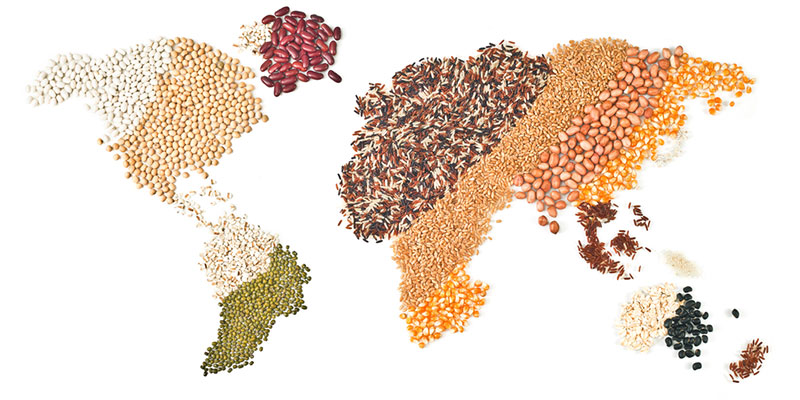Population forecasts pose both opportunities and challenges for American farmers. A middle class that is expected to balloon by 3 billion people globally in the next decade is certain to increase demand for protein as families use their greater buying power to improve and diversify their diets. Farmers and ranchers will have to dramatically increase production to meet consumption needs. Prognosticators say we’ll need as much food in the next 50 years as has been consumed in the past 7,000 years.
 Speakers at an event hosted by FCSAmerica challenged farmers and ranchers to think globally as they shape business plans and strategies to keep their operations competitive in a rapidly changing world. More than 100 producers gathered to hear their insights at the annual Agribusiness Finance Executive Summit in Omaha.
Speakers at an event hosted by FCSAmerica challenged farmers and ranchers to think globally as they shape business plans and strategies to keep their operations competitive in a rapidly changing world. More than 100 producers gathered to hear their insights at the annual Agribusiness Finance Executive Summit in Omaha.
Here are five key takeaways from presentations by Mike Brown, senior director of Elanco’s North American market access; Terry Barr, senior director of CoBank’s knowledge exchange division; Brett Stuart, CEO of Global AgriTrends; and Todd Hale, senior vice president of consumer and shopping insights for The Nielsen Company:
 Ramp up food production: Using 2010 as the baseline, worldwide food production needs to increase 70 percent to meet anticipated demand in the next several decades. Beef and dairy production will need to double by 2050. Corn and soybean production needs to rise 50 percent in the next nine years. And all this must be done with limited land; only 13 percent more acres are available for agriculture.
Ramp up food production: Using 2010 as the baseline, worldwide food production needs to increase 70 percent to meet anticipated demand in the next several decades. Beef and dairy production will need to double by 2050. Corn and soybean production needs to rise 50 percent in the next nine years. And all this must be done with limited land; only 13 percent more acres are available for agriculture.
Technology will prevail: As countries grapple with the need to meet food demand, more of them will recognize and accept the need for advances such as GMOs. Already, some countries are softening their opposition to GMO foods.
Prepare for cycles: The U.S. economy is strengthening and will lead the growth of the global economy. That said, interest rates will rise, putting newfound pressure on some. For young people who have been farming 10 or fewer years, they have never seen an environment of rising interest rates. Work now to get costs in line with commodity prices.
Exports are the future of American ag: Market growth lies in China, Africa and other areas where rising populations and middle classes need our milk, eggs and meat. China wasn’t on most beef producers’ radar five years ago; now it’s the number 1 importer of beef in the world. Capitalizing on overseas markets will require the U.S. to complete critical trade agreements and rethink the logistics of transporting commodities. Our national investment in transportation infrastructure has slowed, creating challenges for farmers who need to move products to market. Producers should advocate for infrastructure improvements to capitalize on export channels.
Renewable energy is here to stay: Despite the promise of productivity associated with fracking for natural gas, gas prices aren’t coming down. Falling corn prices could make ethanol more affordable. The energy sector was more stable in the last five years than the ag industry as a whole, and the outlook says that ethanol and biofuels should remain profitable for the next five years even as we see consolidation in the sector.

